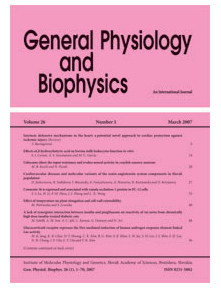General Physiology and Biophysics Vol.44, No.1, p, 39–49, 2025
|
| Title: Senescence in neural cell lines: comparative insights from SH-SY5Y and ReNcell VM |
| Author: Kristina Macova, Diana Mjartinova, Lubica Fialova, Dalibor Nakladal, Dominika Fricova |
|
Abstract: Senescence, a crucial yet paradoxical phenomenon in cellular biology, acts as a barrier against cancer progression while simultaneously promoting aging and age-related pathologies. This duality underlines the importance of precise monitoring of senescence response, especially with regard to the proposed use of drugs selectively removing senescent cells. In particular, little is known about the role of senescence in neurons and in neurodegenerative diseases. Our study investigates the senescence response in neuroblastoma SH-SY5Y cells and human neural progenitor ReNcell VM cells exposed to doxorubicin, a chemotherapeutic agent known to induce DNA damage and subsequent senescence. Through a comprehensive analysis employing the most robust senescence markers, we characterized the senescence-associated patterns in these neural cell lines including cellular morphological changes, SA-beta-gal, γH2A.X, p21Waf1/Cip1 and p16Ink4a. Our findings indicate that ReNcell VM cells exhibit greater senescence-associated response at lower doxorubicin concentrations compared to SH-SY5Y cells. Additionally, we observed cell-type-specific differences in timing and levels of the expression of key cell cycle regulators during senescence. Our results emphasize the necessity of cell-type-specific strategies in senescence research with regard to implications as well as limitations for translation into aging and neurodegenerative disorders.
|
|
| Keywords: Senescence — Neural cells — Doxorubicin — p16Ink4a — p21Waf1/Cip1 |
|
|
|
| Year: 2025, Volume: 44, Issue: 1 |
Page From: 39, Page To: 49 |
doi:10.4149/gpb_2024028
|
|
 download file download file |
|
|
|
|
 download file
download file
